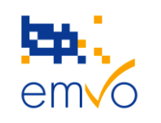Medicines verification system goes live across EU to better protect patients from falsified medicines
08.02.19

- As of 9 February 2019, the supply chain for dispensing medicines to patients in Europe will become even safer.
- Prescription medicines dispensed in Europe which bear safety features, will be verified for the authenticity by the European Medicines Verification System (EMVS).
- The system and its functionalities were mandated by European law under the Falsified Medicines Directive (FMD) and are managed by consortia of stakeholders.
- The European Medicines Verification System (EMVS) is a world first. It uses new technology pioneered by a European organisation, that supports a network of national bodies working together to secure the legal medicines supply chain against falsified medicines.
Brussels, 8th February 2019 – The European Medicines Verification Organisation (EMVO) announces today that the EMVS goes live across Europe. The new system is a world-first for its stakeholder model, its scale, its use of new technologies and represents an unprecedented step towards preventing falsified medicines from entering the legal supply chain.
Patient health and safety is of the utmost importance to the stakeholders that have put all efforts in place to implement safety features and set up the EMVS. The European Commission estimated in an impact assessment accompanying the Falsified Medicines Directive (FMD), that the prevalence of counterfeit medicines in the legal supply chain in Europe is approximately 0.005%.
EMVO was established in 2015 in accordance with the legalities set out in the FMD (Directive 2011/62/EU) and the associated Delegated Regulation (EU/2016/161). Its members are organisations representing pharmaceutical manufacturers and parallel importers (Medicines for Europe, EFPIA, EAEPC), wholesalers (GIRP), community pharmacists (PGEU) and hospitals and hospital pharmacies (EAHP, HOPE). All technical developments of the EMVS are entirely funded by pharmaceutical manufacturers and parallel importers, whereas wholesalers and pharmacies contribute to the governance of EMVO and the national systems, meaning that the public makes no financial contribution to increase the security of the supply of medicinal products.
Hugh Pullen, President of EMVO, comments; “The EMVS has a unique structure that really makes it one of a kind. It will connect around 2,000 pharmaceutical companies, around 6,000 wholesale distribution authorisation holders, 140,000 pharmacies, 5,000 hospital pharmacies and around 2000 dispensing doctors in 28 EEA countries1 ”.
He adds; “It would not have been possible to reach this landmark without a strong EMVO team and the substantial collaboration between all stakeholders in the pharmaceutical supply chain. “EMVO will ensure that the system remains technical stable, secure and that any issues are ironed out without any disruption 1 Italy and Greece have longer transition periods. for patients or the pharmaceutical supply chain. Looking beyond Europe, the system set up by EMVO could well serve as a blueprint for securing the supply of medicines outside of Europe.
How the system works:
• Pharmaceutical manufacturers and parallel importers will now serialise the packaging of their prescription medicines with a Unique Identifier (imbedded in a two-dimensional data-matrix), as well as sealing the packaging with a tamper verification feature. The Unique Identifiers are then uploaded by the manufacturer to the European Hub (the EMVS).
• Using specifically designed software, wholesalers and other stakeholders in the supply chain will scan the data matrix on the outer packaging of the pack to verify its authenticity as it travels through the supply chain. The verification of the Unique Identifier and authentication happens in the National Medicines Verification System (NMVS). The European Hub connects the national systems in order to make them interoperable. It’s also through a secure connection with the European Hub that medicine manufacturers upload the data of the medicinal products.
• Before dispensing the medicines to a patient, the unique identifier will be decommissioned from the EMVS by the pharmacist, hospital pharmacist or, in some special cases, the wholesaler. This provides a final safety measure to ensure the end point verification of the medicines’ authenticity.
More details:
EMVO stakeholders:
- European Federation of Pharmaceutical Industries and Associations
- Medicines for Europe
- European Association of Euro-Pharmaceutical Companies
- European Healthcare Distribution Association
- Pharmaceutical Group of the European Union
- European Association of Hospital Pharmacists
- European Hospital and Healthcare Federation
Knowledge database: https://emvo-medicines.eu/knowledge-database/
Press contact:
Alastair Crooks
Commercial and Partner Management
European Medicines Verification Organisation
alastair.crooks@emvo-medicines.eu
+32 2 569 98 48